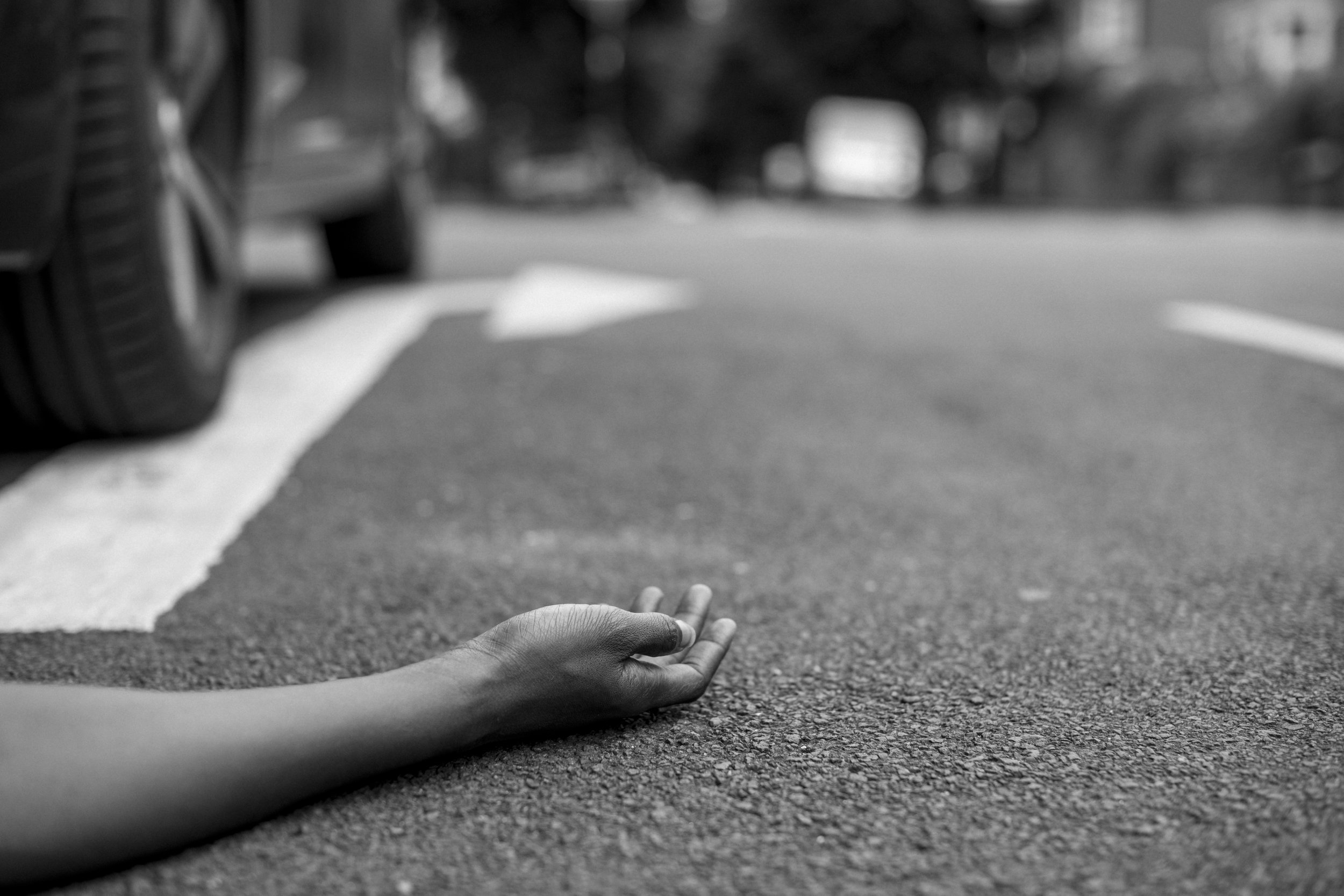A Plea for Context and Dignity in the New York Times Coverage of the Riverside Attack in Nairobi
Photo: rawpixel
Words: Savannah Dodd
The question of whether to show photographs of trauma, suffering, and death is not a new one, but it is a particularly timely one in the wake of the Riverside Attack in Nairobi. Meaghan Looram, New York Times (NYT) director of photography, defended the decision of the NYT to publish a graphic photograph of men who perished in the attack. She based her argument on a belief that they have a responsibility to “honestly convey the events of the world, horrific and disturbing as those events may sometimes be.”
Looram seems to take a page out of John Taylor’s book Body Horror where he argues that the press has a “moral responsibility” to publish photographs of suffering in the world. Taylor suggests that, when we censor the amount of graphic content in photographs of suffering, it is easier for the viewer to be complacent about suffering in the world.
Other arguments for publishing such photographs abound. Roger Tooth, former head of photography at the Guardian, puts himself in the position of the deceased: “If you had died a violent and unjust death, wouldn't you want the world to know all the details surrounding that death?” Therefore showing such photographs can be a kind of validation. In some cases, a decision not to publish photographs of a traumatic event may bring the entire event into question. Taylor explains, “the absence of photographs may be regarded as absence of proof.” In a post-truth era that uses “pics or it didn’t happen” as its mantra, photographic evidence becomes particularly important.
While these may be compelling arguments for the media to publish photographs of trauma, suffering, and death, there are equally compelling arguments against it. For as soon as we put ourselves in the shoes of the victim, as Tooth does, we also have to put ourselves in the shoes of the perpetrator by recognizing that such media attention may have been their ultimate objective. As George Ogola, Reader in Journalism at the University of Central Lancashire, writes:
“Terror attacks no longer just target victims, they also target the public. The aim is to cause both physical and psychological harm which is achieved through the creation of shock, panic and a sense of helplessness. ... Terrorists create a theatre of death and destruction. The media provides them a stage at no cost.”
Ogola’s remarks suggest that the NYT became nearly complicit with al-Shabab by providing a platform for highlighting the violence they perpetrated in Nairobi.
Others argue that publishing photographs of trauma, suffering, and death are an invitation for voyeurism. We have all seen the warnings on news platforms that encourage “viewer discretion.” These warnings give the viewer the option to proceed or to turn away from graphic photographs of trauma. It is worth noting that the NYT did not give the viewer any such warning when they published the photograph of the deceased men in the restaurant. But Tooth has his reservations about how such a warning functions in practice. He asks rhetorically: “Surely that is more of an invitation to the prurient rather than a warning?”
Following the downing of Malaysia Airlines Flight 17 in Ukraine, Jerome Sessini’s photographs of the bodies of those who had perished in the crash were published online by Time. Helen Lewis reports that these “were the most viewed photographs in Time’s Lightbox section” in 2015, “attracting nearly 12 million page views and 900,000 unique visitors.” This voracious appetite for graphic imagery is nothing new. Nearly a decade before to Lewis’ article, Taylor described how photographs of trauma, suffering, and death “satisfy plain voyeurism, fascination and sadism.” “Gruesome pictures are sensational to look at, a feast for morbid eyes.”
Many photographers, writers, and critics advise that the best way to prevent a voyeuristic gaze and to promote critical engagement is to provide sufficient context. Providing context for the viewer to gain some insight and understanding into a photograph of trauma, suffering, or death promotes empathetic engagement with the photograph.
This connects to one of the central criticisms of the NYT’s decision to publish Khalil Senosi’s photograph of the men who perished in the Riverside Attack. Many people took to Twitter to express their frustration the NYT would not have published the photograph if the men had been white. In response to this criticism, Looram points to the fact that the NYT also published photographs of people who died in the Las Vegas shooting in 2017. Looram used this as evidence against the argument that photographs of the dead in low- and middle-income countries are frequently published in Western media outlets, but that photographs of the dead in the USA or Europe are rarely – if ever – published.
However, there is a sizeable difference between these two situations in terms of the amount of context the NYT provided. After the Las Vegas shooting, we learned the names of the people who died. We read about their careers, their hobbies, and the people that they left behind. Of the injured, we learn about their struggles with recovery and PTSD. We read about the impact of the terrorist attack on the surrounding community. We get heroic stories of quick-thinking bravery and critical reflections about what we should call the attack.
What have we learned from the NYT about the people who died at the Riverside attack? We learn the names of a few of the deceased and a couple stories from witness that add colour to the reporting. But who were the men in the restaurant? Where is their story?
Ogola describes the difference in the amount of context provided as a kind of “flattening.” Rather than telling a well-rounded and complex story, Western media tells more simplistic, “flattened” stories about “distant countries.” As a result, we get nameless victims whose dramatic deaths illustrate our newspapers. Ogola writes:
“Emotionally removed from the pain and misery of these far off events, distant deaths are often narrated as spectacles. The victims are stripped of their dignity, becoming disposable objects of pity. Images of their bodies are seen as acceptable to the otherwise delicate sensibilities of Western audiences.”
Yet Western victims come clearly into focus, even when they die distant deaths. Unlike the BBC who gave the names and stories of 13 of the 21 victims of who perished in the Nairobi attack, the NYT only gave us the stories of four, two of whom were American and British South African. Notably, these two individuals were the only victims who were not Kenyan. They were also the only two victims who were white. We are given their context, and they are given their dignity. It is either an odd coincidence that both of the white victims out of 21 were selected for the feature, or it is due to a process of selection.
Ogola argues that the difference between the media representation of black Kenyan deaths and white Western deaths is intentional: “The double standards aren’t accidental: they are institutionalised forms of narration of ‘the Other’.” Looram seems to acknowledge that this double standard is intentional, but she says that it is due to the fact that the NYT’s target audience is American:
“Historically, I think that American news organizations did tend to consider only a local or national audience, and thus may have applied different standards to material from locations broadly thought to be remote or ‘over there,’ rather than close to home.”
However, Sarah Sentilles believes that nationality is not the central factor in determining the “standards” of representation in the media. Instead, she argues that race is the determining factor. Sentilles’ argument quickly supersedes Looram’s when we highlight the fact that the two white victims were represented with more context than the black Kenyan victims, even though one of the white victims was not American.
Yet even if we were to accept Looram’s argument that national circulation is the basis for the difference in how Kenyan and non-Kenyan deaths are reported, would this be acceptable? I don’t think so. A victim’s right to dignity in death should not change depending on their nationality or on the nationality of the audience.
There are many considerations that go into decisions about whether to publish graphic photographs or trauma, suffering, and death. But when the decision is taken to publish such photographs, editors need to do due diligence to ensure that the victim is represented with dignity. This includes, but is not limited to, providing the viewer with sufficient context to promote understanding and empathetic engagement.
Moreover, editors need to seriously consider their ability to treat black people with the same dignity as white people in their editorial decisions. Rachel Strohm writes very honestly: “I’m a white American. We all grow up racist because that’s the society and institutions around us. We all need to actively unlearn what we’re taught. This includes pressing the US media to be better.” Strohm points to a problem that is obviously much more expansive than a question of photography ethics and for which there is no quick fix.
But where can we start? We can ensure that editorial decisions involve people of different racial, ethnic, and geographic backgrounds. We can talk to the people in our photographs to better understand who they are and how they want to be represented. We can actively work against stereotyping and “flattening” by choosing to publish rounded, nuanced stories about the people in our pictures.
Furthermore, we can practice empathy when we work with photographs. We can try to put ourselves in the position of the people we see in the photographs, or in the position of their loved ones. What would have happened if the photo editors had imagined, if only for a moment, that the man in the restaurant was their father or their son? How would the story that they told about that photograph have been different? Would their decision to use that photograph change?
If we are going to use their picture, we must do the work that it takes to give them dignity in that process.





